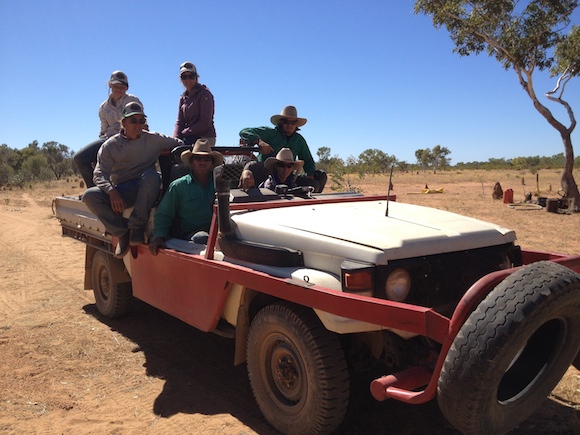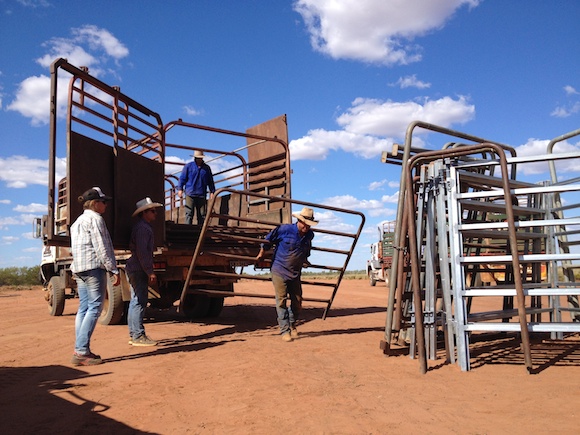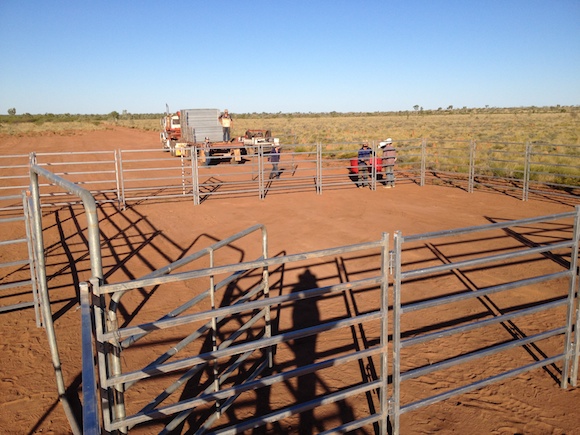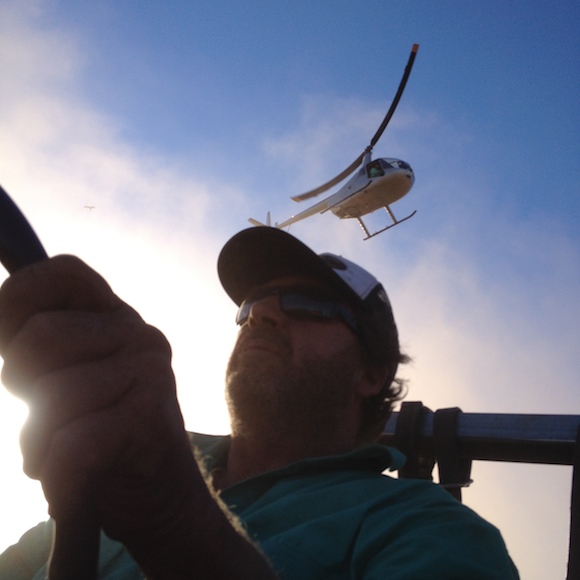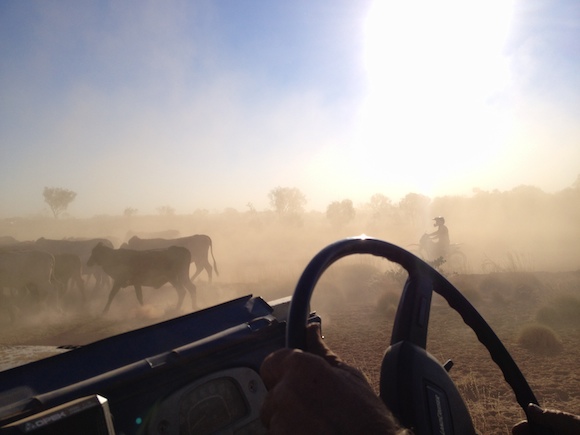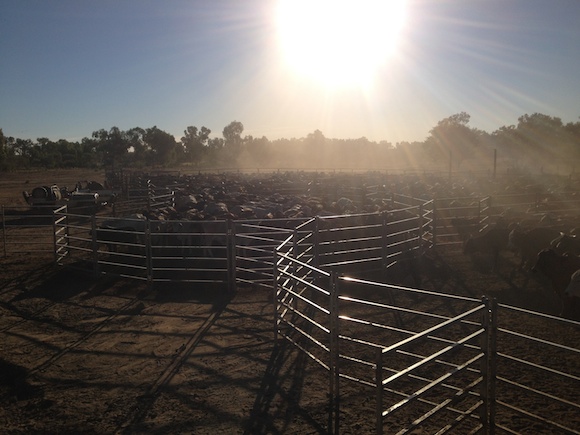Back again – So, let’s get into it!
Host: Lochon Contracting
Written by Tini – Owner, Lochon Contracting.
The stillness of the bush surrounds us. Everybody is fast asleep. Suddenly the subtle noise of twigs cracking, wood breaking, and finally the sound of the camp fire breaks the silence of the dark hours of the early morning. It’s time to get up. It’s time to join Locky for a cup of coffee and a vegemite toast to start the day in the mustering camp.
Hi, I am Tini from Lochon Contracting. We (my partner Locky, who basically IS Lochon Contracting, and I) hosted a week on Central Station last year. It was an interesting experience to share our stories of adventure as well as everyday life and our special moments with all of the readers. So we decided to follow the calling once again.
It is 2014 and we are back on Bulka Station, mustering Haydn and Jane Sale’s cattle. This year we have got a brand new crew.
There is Shannon, such a likeable and capable young man from Broome, who, with his versatile set of skills and calm nature makes for a great team player.
We have Kathy from rural Queensland with us. She has worked on cattle stations in the past and is a true country girl at heart. Her passion for the land and her love for this line of work make her a valuable member of the clan.
There is Jonas, a Belgian traveller, who was as green as you can get them. He has picked up the rules of the game very quickly. He told us that his uncle had been a national motorcross champion in Belgium. Jokingly he said: “Well, maybe I’ve got it in me, too . . .” He had not ridden a motorbike much before. So we put him on one of our Honda 230s to learn. What can I say, he picked it up so effortlessly, that his words at the beginning are ringing in our ears.
With us we also have young Kayla, a boxer from Brisbane. She’s tough, she loves to laugh, and she doesn’t mind getting her hands dirty. Best of all, she wants to learn: how to make a damper, what wood to collect for campfires, how to drive a manual car, how to set up portable yards, what to do when a cranky cattle beast chases you in the yard . . . (she figured that one out pretty quickly!)
Jenny is our 5th new crew member this year. Coming from rural Germany, where she owns some cattle herself, she quickly noticed the differences between wild Kimberley cattle and their domesticated relatives on rolling green hills in small German paddocks. After weeks of handling wild bulls, I am sure she will be going home and be, well, shocked at how “boring” quiet cattle are. There is a chance she might be going straight to the travel agency and book her ticket to come back to the red dirt country.
However, at this stage we are still in the middle of it all, red dirt, dust, and wild cattle . . . By now everybody has gotten used to the morning ritual of getting up early, just as the butcher bird is starting his serenade, lighting a camp fire and boiling the billy.
We arrived a couple of months ago and got into it straight away. This, I believe, is the best way for everyone to raise their level of experience quickly, safely, and with confidence. With some good advice and lots of explaining, we sent our mixed crew into the yard. It didn’t take them long to figure out how to apply the theory that we have been preaching. At the end of the day it comes down to ‘learning by doing’! And I can assure you there has been a lot of ‘doing’ and even more ‘learning’.
Every yard we mustered into had to be built onto or been built completely out of portable panels. These panels are being stacked neatly onto a trailer to be transported wherever they are needed. To build a stable yard out of them the individual panels are being fixed onto each other by chain, pins, female and male fixture on the bottom of the leg, and/or wire. Every four or five panels we place a so called ‘stay’, which is a single panel or a triangle made out of two extra panels, that goes outwards and thus stabilises the line of panels.
When the crew first saw the big trailer loaded with all the panels, they wouldn’t believe us when we said that it is not very hard and it doesn’t take long to build a yard with them. Having done a few by now, they have learned to trust us again. Working as a team really does make this a relatively easy task.
Once the yard is up, it’s time for the cattle to move in. The actual mustering of the cattle is always an adrenaline fuelled event. In widespread areas the helicopters might be flying for many hours to bring cattle in from afar.
Where possible the ground-crew assists by bringing the tail in on motorbikes and/or buggies (4×4 vehicles, cut down and equipped with extended bull bars as well as protective railing all around and a roll bar on top). The buggy, or bull catcher (if driven by the right person) also serves the purpose of challenging any mutinous bulls. If a bull doesn’t obey, he will be caught by the bull buggy, loaded (onto a truck or in our case onto a modified buggy with bull loading capacities) and brought to the yard, where he meets up with his fellow cattle friends. Seeing a yard full of cattle at the end of such a day is a real reward for all the work that was put in.
When the sun has gone down, the dust been washed off the faces and the camp fire is cooking a well deserved stew, the stories start coming out. Our camp is full of laughter and funny and exciting stories. No matter how hard the day has been and how exhausted the crew is, there hasn’t been a dull moment with the 2014 Lochon crew yet. That would have to be the biggest reward at the end of the day. So, keep up the good spirit y’all! Good on ya!

